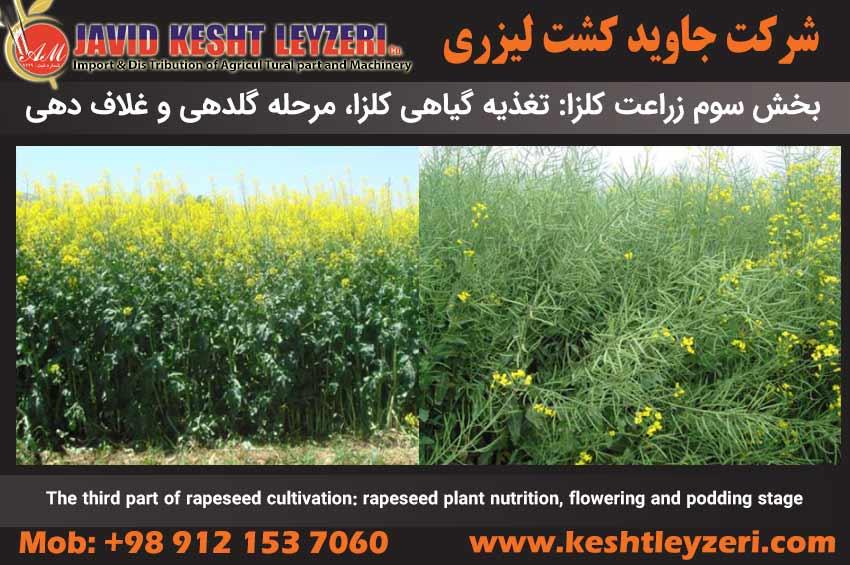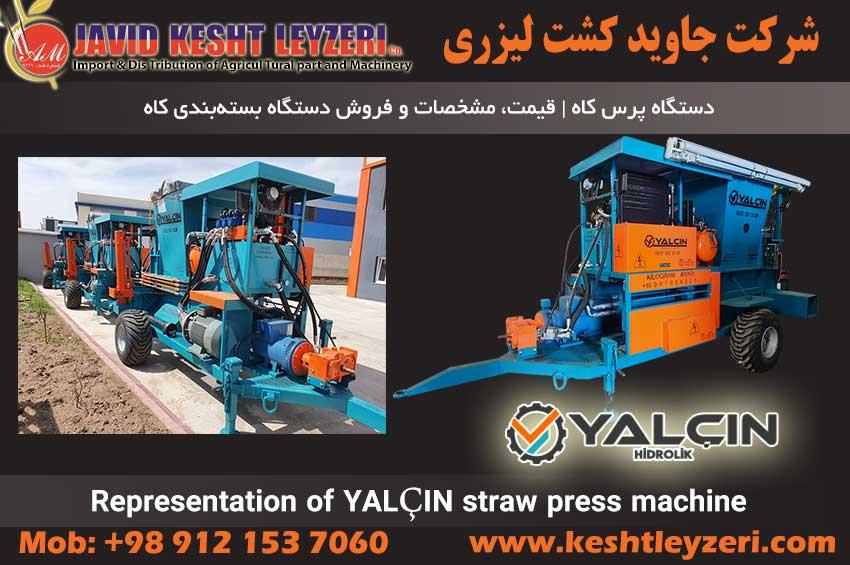
The third part of rapeseed cultivation - rapeseed plant nutrition, flowering and podding stage, seed
javid keshtleyzeri Co.ltd
List of contents of this section:
How is rapeseed plant nutrition?
What are the effects of nutrient deficiency in rapeseed?
What is the flowering and podding stage of rapeseed?
What are the important complications in the budding and flowering stages of rapeseed?
How is the pod and filling stage of rapeseed?
What are the important complications in the pod and filling stage of rapeseed?
What is the ripening stage of rapeseed?
In the following, the above contents will be examined.
How is rapeseed plant nutrition?
Rapeseed needs more nutrients than wheat. But a large part of nutrients absorbed from the soil returns to the soil through rapeseed residues. The highest requirement and absorption of nitrogen from the soil occurs at the beginning of stem growth in rapeseed and reaches its peak in the late budding and early flowering stage, and then the need for nitrogen decreases, which indicates the appropriate time to use nitrogen fertilizer at the beginning of stem growth and the peak of budding. And before flowering. Rapeseed absorbs more sulfur from the soil than any other plant. Sulfur absorption by canola is 2 to 3 times compared to wheat. Rapeseed absorbs boron from the soil more than wheat, and in case of deficiency of this element, the yield of the crop decreases. In late cultivation, the efficiency of fertilizer use is low and decreases. It is better to plant early than to plant late and try to compensate for the delay in growth by using more fertilizer.
Note: In order to detect the lack of nutrients and the need of the rapeseed field for each of the nutrients, it is necessary to consider the results of the soil test before any fertilizer recommendation.
What are the effects of nutrient deficiency in the rapeseed plant?
Complication cause considerations
Dwarf plants with small leaves of phosphorus deficiency, the color and shape of the leaves are similar to healthy and non-deficient plants. And with the purple color on the edge of the leaves
The pale color of the petals and cupping of the leaf, the purple back of the leaf, or the whiteness of the veins, the increase in the thickness of the leaves, the main vein bends upwards along the length of the leaf to the inside of the tube. Sulfur deficiency
Few seeds in the pod
Imperfect pollen grains and poor pollination of flowers due to lack of feathers
It is necessary to use liquid fertilizer at the bud stage
The paleness of the leaves and the purplishness of the old leaves are vertical in the leaves
nitrogen deficiency
The reddening of leaves caused by nitrogen deficiency is aggravated by cold
Dried white to pale pink spots on the edge of the leaf, the bulging of the leaf blade in the spaces between the veins, the increase in the thickness of the leaf, the bending of the basal veins towards the back.
Potassium deficiency
What is the flowering and podding stage of rapeseed?
At this stage, the flowers open from the bottom of the plant and continue upwards, and the pods gradually emerge. Usually, the flowering period in rapeseed lasts up to 28 days. Flowers that appear after the 20th day are less likely to develop into pods. The most important actions at this stage are as follows:
A) Irrigation: The fifth irrigation of the rapeseed field is done at this stage. This irrigation prolongs the flowering period, more pollination and increases the number of pods. By increasing the number of pods, the yield also increases. This stage is the most sensitive stage of rapeseed growth to drought stress for seed production, the podding stage.
b) Use of chemicals: During the flowering stage, avoid the use of any chemicals such as vinegar fertilizer, liquid fertilizer, and chemical poisons because they cause stress in the plant and reduce yield. If necessary, consult with agricultural Jihad experts.
What are the important complications in the budding and flowering stages of rapeseed?
Complication cause considerations
Stem and bud drying with the symptoms of beetle bites, use of traps
Bud drying without bite marks
Discoloration and paleness of the petals
a cold
Sulfur deficiency
High rainfall and paying attention to the consumption of liquid fertilizer before flowering
flower drop
A lot of rain when the flowers open
Stopping the growth of inflorescences and delaying the blooming of flowers. Poisoning caused by hormonal herbicides.
Blowing of herbicides with the contamination of the sprayer with herbicide residues
Burning flowers and changing the color of inflorescences, using insecticides in the flowering stage, using inappropriate insecticides in the blooming stage of flowers causes damage to the field and reduced yield.
How is the pod and filling stage of rapeseed?
At this stage, the flowering period is over and the petals are shed, while the seeds inside the pod are filling and increasing in size. At this time, rapeseed leaves start to fall and green pods play the main role in absorbing sunlight and carrying out photosynthesis. Therefore, maintaining and developing pods is of particular importance. The necessary actions at this stage are as follows:
(a) Fighting against aphids: The second stage of spraying against aphids is done after the end of flowering and at the beginning of the pod stage. This spraying, in addition to its positive effect in increasing yield, can also be effective in controlling the primary population of rapeseed.
(b) Irrigation: The sixth stage of rapeseed irrigation should be done on time when the seeds inside the pods are filling. This stage is the most sensitive stage of rapeseed growth to drought stress in order to produce fruit in the seed filling stage.
What are the important complications in the pod and filling stage of rapeseed?
Complication cause considerations
The pod dries on a part of the inflorescence. The damage of the wax aphid should be done by spraying at the end of the flowering and pod stage.
Absence of pods and yellowing of pods in a part of the flower in the cold season, temporary lack of nutrients such as nitrogen and sulfur, severe loss due to the presence of cool weather in the budding stage and before flowering.
Deformation of wax aphid damage sheath without considerations
The pods are not completely filled and are empty. Improper nutrition of nitrogen and the presence of sulfur and lack of boron.
Longitudinal split of the stem, lack of boron, excessive use of nitrogen fertilizer, high density on the row, breaking the stem from the ground level, the main root has not grown, Foma disease
What is the ripening stage of rapeseed?
At this stage, the seeds inside the pod are large enough and the color of the pod on the main stem starts to turn yellow. At this time, the last irrigation of the rapeseed field, which is the seventh irrigation, is done. Irrigation at this stage leads to an increase in seed weight and yield. If there is no irrigation, the pods will dry green and the seed weight will decrease.






